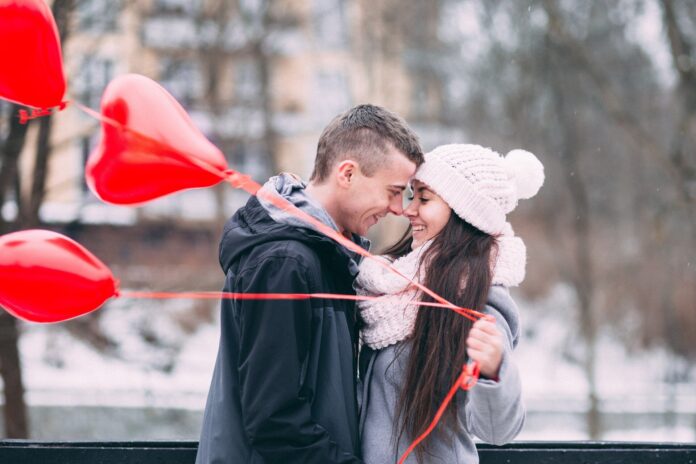What Is Cuffing Season? Why Colder Months Make Us Crave Commitment?
As the air turns crisp and the leaves begin to fall, a new trend sweeps across the dating world: cuffing season. This term, popularized in recent years, describes the time of year when singles feel a strong urge to settle into a committed relationship. But what exactly drives this desire, and why is it seasonal? Let’s dive into the psychology behind cuffing season and why the colder months spark a longing for closeness.
What Is Cuffing Season?
Cuffing season refers to a period during the fall and winter months, generally starting around October and lasting until Valentine’s Day, when single individuals feel a heightened desire to “cuff” or commit to a partner. The term is derived from the idea of “cuffing” oneself to another, symbolizing a temporary bond or commitment during the colder months.
Unlike the summer, when people often embrace the freedom of casual dating and social activities, cuffing season is characterized by an inclination toward finding stability in relationships. With longer nights and colder days, there’s a psychological shift where people crave the comfort and warmth of companionship, making it a prime time for couples to form.
Why Do People Feel the Urge to ‘Cuff’ in Winter?
There are several reasons why cuffing season has become a recognized phenomenon. Psychologists attribute this trend to a mix of environmental and psychological factors that heighten the desire for companionship as the temperature drops.
- Seasonal Need for Comfort: The colder months often bring a desire for warmth and comfort, both physically and emotionally. The need for closeness is intensified as people spend more time indoors and social interactions shift to cozier settings.
- Biological Responses: Some researchers suggest that biological factors may play a role. Colder weather and shorter days can lead to a drop in mood and energy levels, often known as the “winter blues” or Seasonal Affective Disorder (SAD). Having a partner during this time may help combat feelings of loneliness and boost morale.
- The Influence of Holidays: The festive season, which includes holidays like Thanksgiving, Christmas, and New Year’s Eve, is traditionally associated with family gatherings and togetherness. This social environment may amplify the desire for companionship, as people are surrounded by images of couples and families, fostering a longing for similar connection.

The Timeline of Cuffing Season
Cuffing season typically kicks off in October, as the first signs of fall begin. Many singles start seeking potential partners to spend the upcoming holiday season with. The trend continues through December and peaks around Valentine’s Day in February, after which some relationships may naturally dissolve as spring approaches.
This seasonal timeline reflects the temporary nature of many cuffing season relationships. While some couples may continue their relationships beyond winter, others find that their connection fades as warmer weather returns, bringing renewed interest in social and individual activities.
Is Cuffing Season Just a Fad?
Though the term “cuffing season” is relatively new, the concept isn’t. The pattern of seeking comfort and companionship in colder months has been observed for years. What’s different now is that people have a catchy term to describe this seasonal relationship trend, making it more visible in popular culture and social media.
However, while some may view cuffing season as a fleeting trend, for others, it provides a chance to build meaningful connections. The colder months offer a unique opportunity to bond over shared activities, like watching holiday movies, cozying up indoors, or celebrating festive events together.
Tips for Navigating Cuffing Season
If you’re considering entering a relationship this cuffing season, here are some tips to keep in mind:
- Be Clear About Intentions: Whether you’re looking for something temporary or long-term, it’s essential to communicate your expectations to avoid misunderstandings.
- Don’t Rush the Process: Cuffing season can create a sense of urgency, but it’s important not to settle for a relationship that doesn’t feel right just for the sake of having a partner.
- Enjoy the Moment: If you do find someone special, focus on enjoying the companionship and experiences you share, regardless of where the relationship leads.
- Be Mindful of Feelings: While cuffing season relationships may start with the intention of being temporary, it’s natural for feelings to develop. Be open to the possibility of a lasting connection.
:max_bytes(150000):strip_icc():focal(1022x557:1024x559)/What-Is-Cuffing-Season-and-Is-It-Real-Heres-What-Relationship-Experts-Have-to-Say-01-595dc7f93fff4cd38706f5a72a27cb87.jpg)
Conclusion
Cuffing season is a fascinating blend of psychological, social, and biological factors that drive singles to seek committed relationships during the colder months. As winter brings a sense of closeness and the festive season highlights togetherness, many people find themselves longing for the warmth of companionship.
Whether you see it as a fun seasonal trend or an opportunity for genuine connection, cuffing season continues to resonate with singles worldwide, reminding us all of the universal desire for closeness and comfort. So, as the days grow shorter and nights colder, perhaps it’s the perfect time to embrace the season and, who knows, maybe even find a special someone to share it with.

